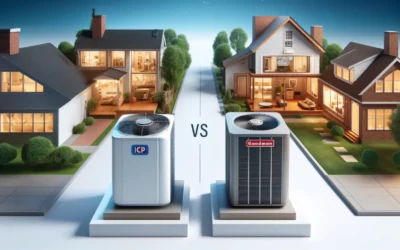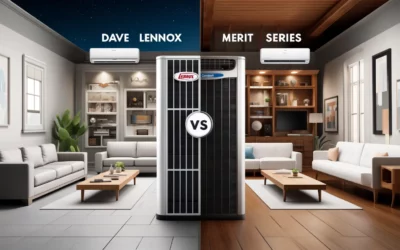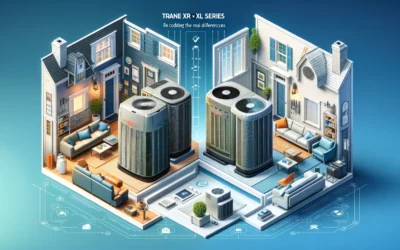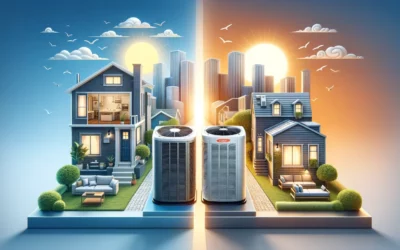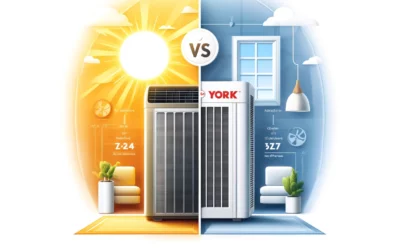From its stunning coastline to its dynamic entertainment scene, California has always been plugged into what’s cool and cutting-edge. But the Golden State is now plugging in a different way: into a green electric future. A growing array of home electrification policies is decrypting the future of energy in the region. These advancements beg the question, how are these policies changing the landscape for homeowners? Strap in folks, because we’re going to do a deep-dive analysis into the wired world of California’s home electrification policies. Grab a cup of coffee, roll up your sleeves, and prepare for an informal, easy-to-understand breakdown of what this energy overhaul really means for you.
The Future of Home Electrification in California
California Plugs In: Home Electrification Policies Explained With a growing focus on renewable energy and reducing carbon emissions, California is leading the way in home electrification. This trend not only benefits the environment but also promotes a shift towards efficient and clean energy sources. As we move towards the future, it’s essential to understand the policies and initiatives driving this movement. One of the key policies in California is encouraging the adoption of electric vehicles (EVs). The state offers various incentive programs, tax credits, and rebates to promote the purchase of EVs, making them more accessible and affordable. Furthermore, the installation of electric vehicle charging stations has been prioritized, ensuring convenient access for EV owners across the state. By supporting the widespread use of electric vehicles, California aims to reduce our reliance on fossil fuels and move towards a more sustainable transportation system. Another significant aspect of home electrification in California is the transition to electric heating systems. Incentives such as grants and rebates are available to support homeowners in replacing traditional gas furnaces with electric heating systems. This shift not only reduces greenhouse gas emissions but also improves indoor air quality, as electric systems don’t produce combustion byproducts. Additionally, state regulations require that all new residential buildings be equipped with electric-ready infrastructure, further promoting the adoption of electric heating systems in the long run. As California plugs into the future of home electrification, it’s clear that the state is committed to driving change and creating a greener, more sustainable future. Through policies promoting EV adoption and electric heating systems, California is leading the way in reducing carbon emissions and fostering a more environmentally friendly lifestyle. So, if you’re a homeowner in California, there’s never been a better time to explore the benefits of home electrification and make a positive impact on the planet.
Decoding California’s Home Electrification Policies
within the two paragraphs.
Interested in understanding California’s emerging home electrification policies and how they are shaping the state’s environmental goals? Look no further! In this post, we will break down the complexities of California’s commitment to electrifying homes and explore the key policies driving this transition. From looking at the benefits of electrification to deciphering the incentives available, we’ve got you covered!
California’s home electrification policies aim to reduce greenhouse gas emissions and combat climate change by transitioning households from fossil fuel-based appliances to electric ones. By electrifying homes, California is not only reducing its carbon footprint but also positioning itself as a leader in the clean energy movement. The state recognizes the importance of shifting away from natural gas and diesel to cleaner energy sources, such as electricity powered by renewable sources like solar and wind.
- Benefits of Home Electrification in California:
- Significantly reduces greenhouse gas emissions
- Improves air quality and public health by eliminating fossil fuel combustion
- Enhances energy efficiency and reduces energy costs in the long run
- Promotes the use of renewable energy sources like solar and wind
- Key Policies Driving Electrification:
- Building Electrification Reach Code
- Zero Emission Construction Program
- Appliance Efficiency Standards
- Rebates and incentives for home electrification upgrades
To learn more about California’s home electrification policies and how they are shaping the state’s clean energy future, stay tuned for our upcoming articles!

Impacts and Implications of Electrification Policies on Californian Homes
We all know that California is a state at the forefront of environmental policies, and home electrification is no exception. The impacts and implications of these policies on Californian homes are vast and wide-reaching, with both positive and negative consequences. Let’s take a closer look at some of the key points to understand the significance of this movement. 1. Energy Efficiency: One of the major goals of electrification policies is to promote energy efficiency in homes. By replacing traditional fossil fuel-burning appliances with electric alternatives, such as electric stoves and heat pumps, households can significantly reduce their carbon footprint. This transition not only helps combat climate change but also has the potential to lower utility bills in the long run. 2. Infrastructure Challenges: While the transition towards electrification is commendable, it does come with its fair share of challenges. Upgrading the electrical infrastructure to support increased electricity demand can be expensive and time-consuming. Additionally, it may require improvements to the electrical grid to handle the load. Policymakers and utility companies need to work together to ensure a smooth transition without impacting the reliability of electricity supply. 3. Equity and Affordability: Another consideration when implementing electrification policies is ensuring that the transition is equitable and affordable for all households. Lower-income households may face additional financial burdens when switching to electric appliances, as they might need to invest in new equipment or make modifications to their homes. It is crucial to provide targeted support and incentives to ensure that disadvantaged communities are not left behind. 4. Health Benefits: Electrification policies can also have a positive impact on indoor air quality and public health. By phasing out natural gas appliances, homes can eliminate the risks associated with carbon monoxide poisoning and indoor air pollution. This transition can particularly benefit vulnerable populations, such as children and the elderly, who are more susceptible to respiratory issues. To sum up, the electrification policies in California have far-reaching implications for homeowners. From promoting energy efficiency and reducing carbon emissions to addressing infrastructure challenges and ensuring equity, the electrification movement is a significant step towards a sustainable future. However, it is crucial to navigate these policies carefully, considering the unique circumstances of each household and community. Only by doing so can we truly harness the immense potential of electrification and create a greener, healthier California for generations to come.
Handy Tips for Navigating Home Electrification in California
California is at the forefront of the home electrification movement, and navigating this new landscape can be both exciting and complex. To help you make sense of it all, we’ve put together some handy tips to guide you through the electrification process in the Golden State. 1. Understand the benefits: One of the major advantages of home electrification is its positive impact on the environment. By switching to electric appliances and heating systems, you can significantly reduce your carbon footprint and contribute to a cleaner, greener California. Additionally, electrification often leads to cost savings in the long run, as electricity is typically cheaper and more stable than other energy sources. 2. Research available incentives and rebates: The California government offers various financial incentives to encourage homeowners to electrify their homes. These incentives can help offset the cost of purchasing and installing energy-efficient appliances, electric vehicle chargers, and solar panels. Take the time to explore the California Energy Commission’s website and local utility company programs to find out what incentives are available in your area. These rebates and incentives can make electrification more affordable and accessible for many Californians. In conclusion, home electrification in California is a promising way to reduce greenhouse gas emissions and save money in the long run. By understanding the benefits and researching available incentives, you can successfully navigate the electrification process and be part of California’s clean energy future. So, why wait? Start exploring the electrification options for your home today and join the growing movement towards a sustainable, electric-powered California.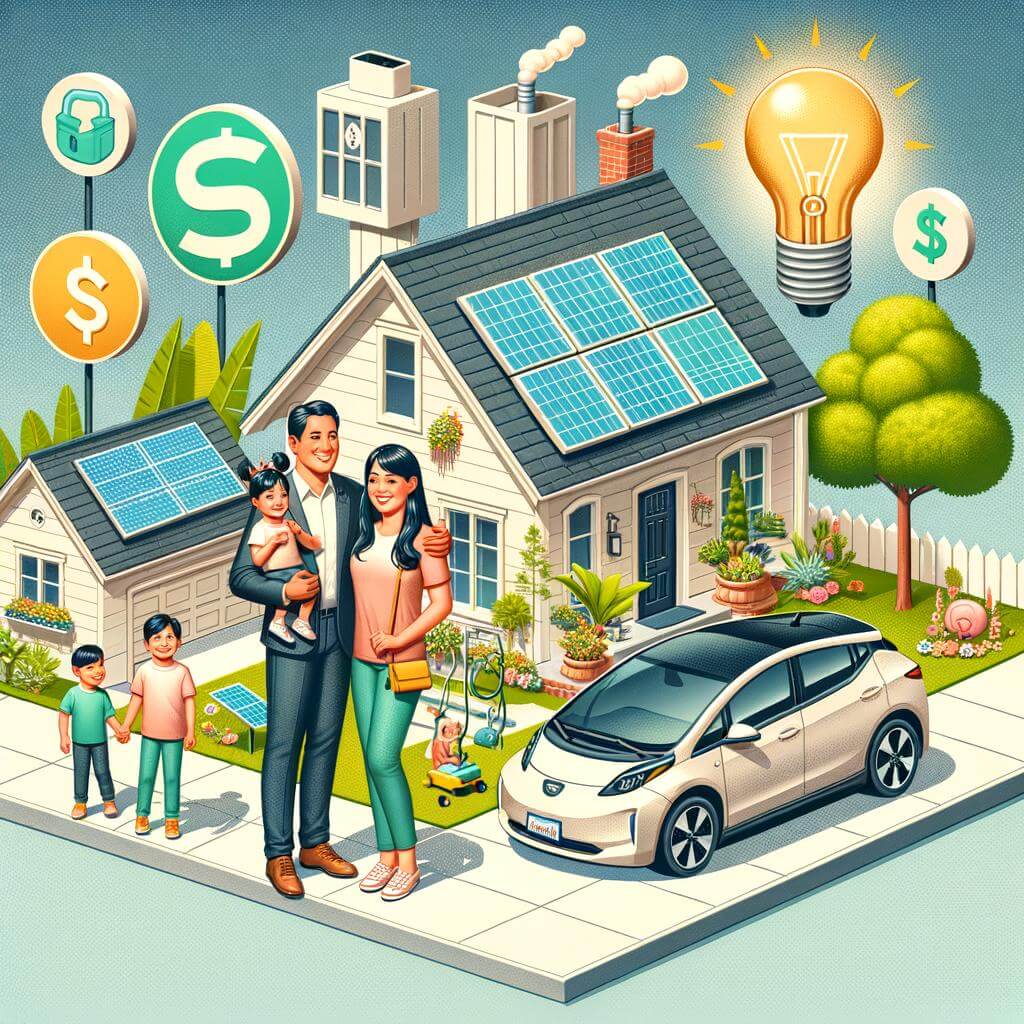
How California Homeowners Can Benefit from Electrification Policies
California homeowners can reap several benefits from the state’s electrification policies. Firstly, transitioning to electric appliances and heating systems can significantly reduce carbon emissions. By replacing gas-powered appliances with electric alternatives, homeowners can contribute to the state’s efforts to combat climate change and improve air quality. In addition to environmental benefits, electrification policies can also bring long-term cost savings for homeowners. Electric appliances often have lower operating costs compared to their gas-powered counterparts. For example, electric heat pumps are more energy-efficient than gas furnaces, resulting in lower energy bills. Furthermore, by taking advantage of time-of-use electricity rates, homeowners can save even more money by running their appliances during off-peak hours when electricity prices are lower. The state offers various incentives and rebate programs to encourage homeowners to embrace electrification. These incentives can offset the initial cost of purchasing and installing electric appliances, making the transition more affordable. Homeowners can also benefit from utility company programs that provide discounts on installing electric vehicle charging stations or even offer free installation in some cases. To help homeowners make informed decisions, the California government provides resources and information on electrification policies. The California Energy Commission website offers guides and tools to help homeowners understand the benefits of electrification and navigate the process. Additionally, homeowners can also find a list of qualified contractors and vendors who specialize in electric appliance installation. Overall, California’s electrification policies create a win-win situation for homeowners. By embracing electric appliances and heating systems, homeowners can contribute to reducing carbon emissions and improving air quality, while also enjoying long-term cost savings and incentives provided by the state. So, it’s time for California homeowners to plug in and take advantage of these beneficial policies.
Green Living: Recommendations for Maximizing Home Electrification Benefits
within the two paragraphs below. To maximize the benefits of home electrification in California, there are several recommendations that homeowners can follow. First and foremost, investing in energy-efficient appliances is key. Look for appliances with the ENERGY STAR label, as these are designed to consume less energy and reduce your electricity bills. Not only will this help you save money in the long run, but it will also lower your carbon footprint. Another recommendation is to install a smart home energy management system. These systems allow you to monitor and control your energy usage remotely, ensuring that your home is as efficient as possible. By connecting to your appliances and devices, you can easily optimize energy usage and avoid unnecessary wastage. Plus, some systems even provide you with real-time data and personalized recommendations on how to further reduce your energy consumption. If you’re considering the electrification of your home in California, it’s also important to understand the available incentives and rebates. The state offers various financial incentives, including tax credits and rebates, to encourage homeowners to transition to electric appliances and vehicles. Take advantage of these incentives to not only reduce your initial investment but also to make a positive impact on the environment. Lastly, consider installing solar panels on your roof. Solar energy is a clean and renewable energy source, and by harnessing the power of the sun, you can significantly reduce your reliance on the electrical grid. This not only helps the environment but also protects you against rising energy costs in the future. In conclusion, maximizing the benefits of home electrification in California requires a combination of energy-efficient appliances, smart energy management systems, taking advantage of incentives, and embracing solar energy. By following these recommendations, you can reduce your carbon footprint, lower your energy bills, and contribute to a more sustainable future. In wrapping up, California’s aggressive stance towards home electrification is a bold testament to the state’s unwavering commitment to a zero-emission future. By being at the fore of innovative public policies and paving the way for a flurry of electrification initiatives, the “Golden State” is sending a strong message: It is time for us all to plug in and join the electric revolution. Whether it’s the convenience of electric appliances, or the financial and environmental benefits, the case for a switch is persuasive. Despite challenges, these policies offer a mesmerizing glimpse into the potential future of home living, one that is not just sustainable, but also incredibly energy efficient. And who knows? Maybe powering your toaster with clean renewable energy will be the new normal sooner than you think. It’s certainly food for thought. California has plugged in. The question now is: will the rest of us follow suit?





